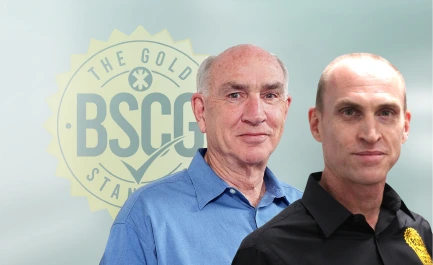
THE GOLD STANDARD IN THIRD-PARTY CERTIFICATION AND TESTING : +1-800-920-6605, info@bscg.org
In 2006, in another analysis of a dietary supplement at the behest of the Washington Post, Dr. Catlin was first to identify the designer stimulant methylhexaneamine, a potentially deadly amphetamine-like substance. This compound was found in Ergopharm’s Ergolean AMP, a product formulated by BALCO chemist Patrick Arnold, who was then awaiting sentencing for his role there. The product was pulled from the market, but in 2011 USADA (United States Anti-Doping Agency) issued an official warning to athletes to avoid the dangerous stimulant in a range of supplement products after a rash of positive test results. Unlike some problematic supplement ingredients, this compound often could be found in supplement ingredient lists—under the names methylhexaneamine, 1,3-dimethylamylamine (DMAA), dimethylpentylamine (DMP) 4-methylhexan-2-amine, Geranamine, and geranium oil, extract, or stems and leaves.
For more information, see the original Washington Post story “Chemist’s New Product Contains Hidden Substance,” by Amy Shipley, May 8, 2006.
https://www.washingtonpost.com/wp-dyn/content/article/2006/05/07/AR2006050700913_2.html
USADA Advisory “Beware: Your Supplement Could Cause a Positive Test,” June 16, 2011
Athlete Advisory – Methylhexaneamine And Dietary Supplements
A MULTITUDE OF CONTRIBUTIONSDr. Catlin’s contributions to detecting PEDs have extended beyond these remarkable breakthroughs. Among other things, he determined the pharmacokinetics of steroids such as androstenedione (“andro,” formerly sold over the counter) and DHEA, provided analytical consulting as part of government action to identify and expose designer drugs like the aromatase inhibitor 6-OXO and the designer steroid Tren in supplement products, and succeeded at adapting a test for the potent blood-boosting drug CERA (sold under the brand name Mircera) for equines.



 YouTube Channel
YouTube Channel
Oliver Catlin Interview
 BSCG BLOG
BSCG BLOG
Tainted Supplements Still Causing NFL Doping Violations

 The Catlin Perspective blog widget
The Catlin Perspective blog widget
THE HISTORY OF BSCG